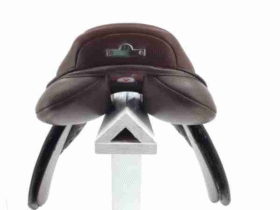The shadowy figures of feudal Japan continue to fascinate us, but many of their weapons and tactics still hide in the dark. One question that pops up often is whether these covert operatives carried the wakizashi, the shorter blade that samurai usually wore at their sides.
This debate comes from centuries of mixed-up records, romantic films, and the tricky business of stealth warfare. Ninjas and samurai lived in the same centuries, but their jobs, social ranks, and battle plans were worlds apart. To figure out if the wakizashi was a ninja’s choice, we need to look at who the ninja really was and why certain weapons worked better for shadowy raids.
The answer is more than a weapons lineup. It shows how flexible ninja tactics really were and pushes us to rethink what we think we know about martial arts in Japan. By digging into old records, weighing how practical each blade was, and putting it all into the larger picture of feudal Japan, we can split the myths from the reality when it comes to what ninjas actually carried.
Who Were the Ninjas?
The real ninjas of history were known as shinobi or shinobi-no-mono. They were not the nearly-invisible, supernatural assassins popular today. Instead, they were scouts and spies who gathered intelligence, mapped enemy territory, and sometimes undermined defenses. They first appeared during Japan’s medieval era, a time of shifting feudal loyalties, when warlords needed quiet ways to learn about rivals and disrupt their plans without attracting attention.
Ninjas did not belong to the much-respected samurai caste. They were rarely knights, but men and women of humble origin: rice farmers, rice merchants, low-status commoners, and even disgraced samurai who knew how to move unseen. Their training stressed quiet approach, misdirection, and the ability to remain alive when corners were tightly closed, not the formal, ceremonial fighting of the samurai duels.
The best-known ninja families lived in Iga and Koga, mountain districts whose high hills and lush forests naturally concealed dark figures after sun-down. For centuries the families taught their youth the secrets of slipping through shadows, entering the enemy’s campsite, and vanishing without a sound. Mastery of the craft passed through fathers, mothers, and uncles in a deep, interwoven clan memory.
The arsenal of the historical ninja was humble, built to serve the mission. They rarely brandished swords for show. Instead they carried gear that could slide between layers of clothing: nail-studded climbing hooks for scaling walls, pouches of choking smoke, and tiny spikes scatter to delay pursuit. Every item could serve two or three roles, so that a single small package held the answer to many possible problems.
What is a Wakizashi?
The wakizashi is one of Japan’s most elegant sword shapes. Its blade is curved and usually 30 to 60 centimeters long. This shorter sword was designed to be a companion to the longer katana, and together they formed the set known as the daisho. Even though it was smaller, makers treated the wakizashi with the same careful forging techniques as a katana, resulting in a blade that is just as strong and beautiful.
In the life of a samurai, the wakizashi was more than a weapon. It was a sword of honor, used in important ceremonies and, in particular, in the ritual of seppuku. This gave it a spiritual weight that set it apart from other blades. The wakizashi also served as a badge of rank. Only samurai were allowed to wear the full daisho, so anyone who saw the shorter sword understood that its owner belonged to the warrior class.
The wakizashi was designed to cut with power even in tight places, where the long katana might be unwieldy. Its balanced length and weight allowed the bearer to draw, strike, and re-sheathe with speed and precision. This made it a trusted sidearm for indoors fights, sudden ambushes, and other situations where space was limited. The compact blade created a smaller silhouette, making it easier to move in close quarters and giving the samurai a clear edge.
Wakizashi swords were made using the same expert metallurgical techniques as katana. Swordsmiths applied differential hardening to give the blade the distinctive hamon pattern, while the full tang design made it strong enough to survive heavy battle strikes. These innovations were the result of hundreds of years of Japanese sword-making skill.
Did Ninjas Use Wakizashi Swords?
Evidence shows that ninjas did not commonly carry wakizashi, even though the blade would have worked well as a weapon. Practical and social reasons made it a poor fit for their assignments. Instead, ninjas chose different tools that fit their secretive missions better.
First, the wakizashi’s close ties to samurai status posed a serious problem for identity concealment. A ninja caught with the sword would be seen as samurai or as someone illegally holding samurai gear, thus losing the anonymity that covert work needed.
Second, the sword’s design emphasized cutting. While this was lethal in a duel, ninjas wanted a blade that could handle multiple tasks—killing, climbing, or performing camp chores. A weapon that could only slash was not flexible enough for the quick, changing situations ninjas faced.
The beautiful craftsmanship that made a wakizashi so prized also made it hard to replace and very costly. A ninja in enemy territory couldn’t afford to lose such a valuable weapon. Instead, they favored gear that could vanish in seconds, be left behind without regret, or be quickly made from whatever local materials lay at hand.
Still, some old stories tell of ninjas carrying wakizashi for special jobs. Usually, this happened when a mission forced the operative to look like a samurai, or when the mission’s success truly depended on having the very best-edge blade. But these situations were rare and not the way most ninja everyday planned for combat.
Other Tools of the Ninja
To meet their unique needs, ninjas built a varied set of tools that worked better than a sword for most jobs. The shuriken, sometimes pictured in movies as spinny stars, were in fact small, pointed disks that did much more than get tossed. They could be pressed into service as climbing spikes, wedged into doors for a quiet entry, or tossed only to create a moment of distraction when seconds counted.
The kunai was one of the most useful tools any shinobi could carry. It started life as a simple gardening trowel, but its strong, pointed blade was perfect for digging, prying, climbing, and cutting. Light and easy to hide, the kunai could slip into a sleeve or belt without raising eyebrows. On a mission, it could dig a hold, pry open a door, let a spy climb a wall, or answer a close fight without weighing down the carrier.
If a shinobi needed a blade, the shorter, straight ninjato was the typical choice. It was lighter and cheaper than a curved katana, yet it could still slash and stab. The straight edge let a ninja thrust quickly, and its shorter length made it easier to hide under a cloak or inside a false belly.
Ninja arsenals also held the chain-and-sickle kusarigama, the tessen iron fan, and hidden blades hidden inside candlesticks or hairpins. Every piece of gear was chosen to fit the shinobi’s life in crowded towns or dark woods, letting them blend into the least suspicious role. The strength of this approach was not in one magic weapon, but in having the right answer for whatever surprise the night might hold.
The Adaptive Nature of Ninja Warfare
When people argue about whether ninjas regularly carried a wakizashi, the debate really shines a light on ninja adaptability, not personal weapon loyalties. These covert agents won their battles not by sticking to accepted swords, but by grabbing any tool that best fit the job at hand—blending, striking, escaping—without a backward glance at the rule book.
The wakizashi itself is a beautiful piece, lovingly made, designed for precise cuts that the whole samurai world admired. Yet, its proud lineage carried baggage. Carrying one tagged you as a person of some means, and it demanded careful attention and polite placement. Expensive to replace and singular in its role, a wakizashi fell short if a ninja had to scramble through darkness, scale a wall, or poison a plank of wood. In those moments, a shorter blade, a chain, or a handful of shuriken fit the bill better—and cost less.
This choice of gear doesn’t erase the wakizashi’s glory, nor does it suggest the ninja never faced one. It simply shows that, in the same decade in the same valley, a warrior bound by proud custom reached for a family blade, while the ninja reached for the tool the night whispered was right.
When we recognize this, we separate the bright strokes of ninja fantasy from the subtle ink of history. The ninja chose, bent, and modified their gear to suit shadow and thunder. Collectors and dojo historians, that same clarity keeps our racks real and our practice grounded in the silent, cunning truth of the art.














Leave a Reply